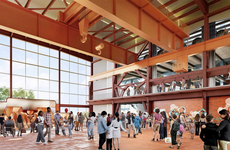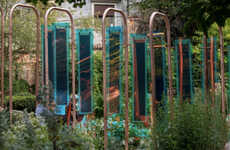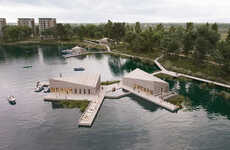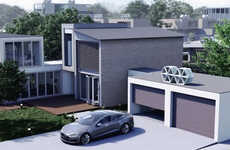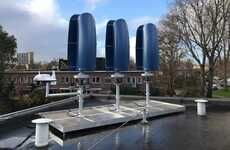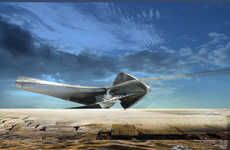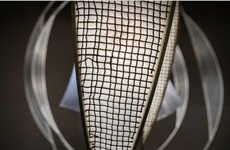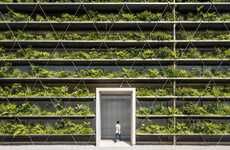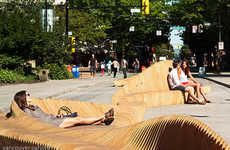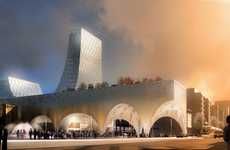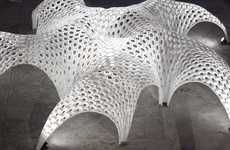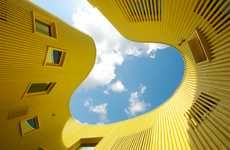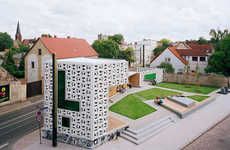
Fresh Hills Integrates a Wind Farm with a Park on a Covered Landfill
Amelia Roblin — December 12, 2012 — Eco
References: m-rad & suckerpunchdaily
The M-Rad studio proposes to accomplish a variety of exciting and innovative things in its Fresh Hills project. The plan involves bringing new life, purpose and appreciation to the location of an old landfill on Staten Island in New York state by introducing eco-friendly industry and by welcoming the public.
The architecture of the proposal is enthralling in its organic incorporation of sustainably sourced bamboo for its sweeping nest-like structures. These long and curving masses work to guide gusts of air across the grassy site towards the wind turbines within.
Matthew Rosenberg, Robbie Eleazer and Emmy Maruta have also given Fresh Hills the ability to filter carbon dioxide in addition to harnessing energy cleanly. To top it off, the site would function as an expansive park to overturn the typically isolated nature of wind farms.
The architecture of the proposal is enthralling in its organic incorporation of sustainably sourced bamboo for its sweeping nest-like structures. These long and curving masses work to guide gusts of air across the grassy site towards the wind turbines within.
Matthew Rosenberg, Robbie Eleazer and Emmy Maruta have also given Fresh Hills the ability to filter carbon dioxide in addition to harnessing energy cleanly. To top it off, the site would function as an expansive park to overturn the typically isolated nature of wind farms.
Trend Themes
1. Sustainable Architecture - Incorporating organic and eco-friendly materials for innovative building designs and energy-efficient solutions.
2. Circular Economy - Utilizing renewable energy sources and waste management practices to build self-sustaining and environmentally conscious communities.
3. Green Tourism - Developing eco-tourism destinations that not only preserve natural resources but also educate and engage visitors on sustainability practices.
Industry Implications
1. Renewable Energy - Providing innovative technologies that harness energy from sustainable sources to power communities and reduce carbon footprint.
2. Sustainable Construction - Developing building materials and techniques that minimize environmental impact and promote circular economy principles.
3. Eco-tourism - Creating tourism experiences that prioritize sustainability and conservation efforts to benefit local communities and the environment.
4.8
Score
Popularity
Activity
Freshness


